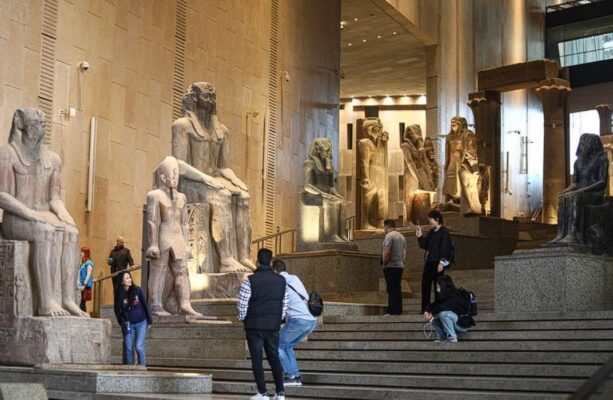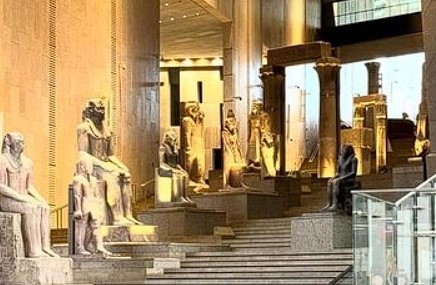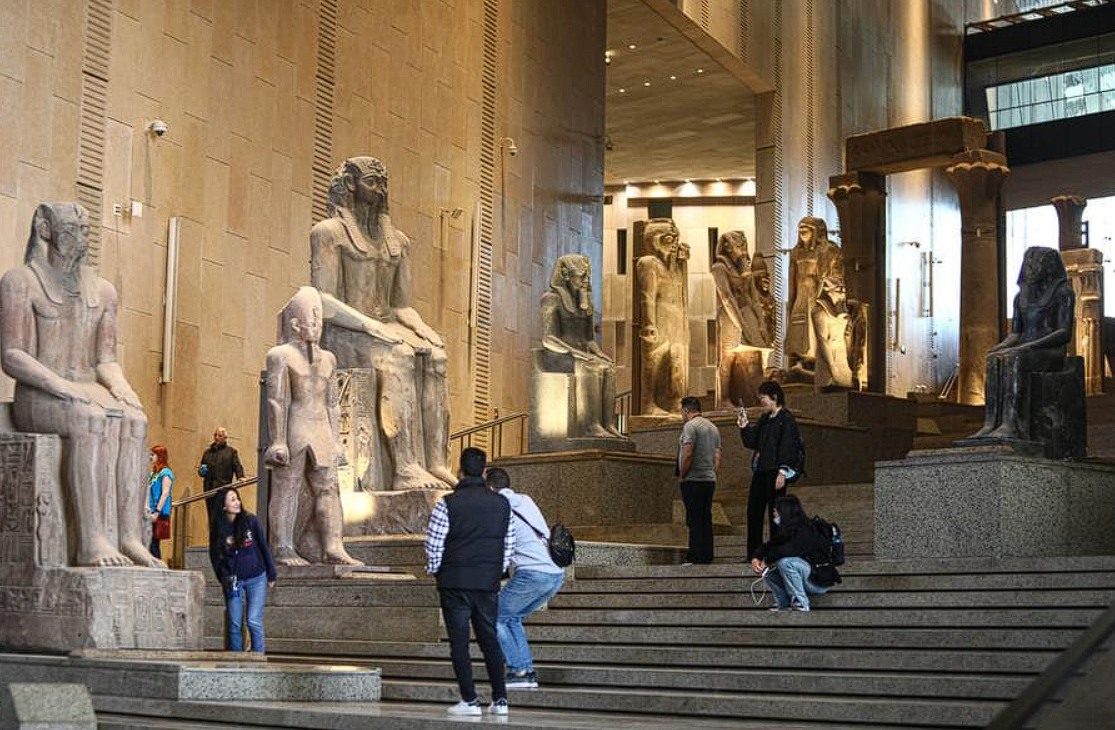After years of anticipation, the Grand Egyptian Museum (GEM) has officially partially opened, offering visitors a glimpse into one of the world’s greatest museums. With an investment of $1 billion, GEM is considered one of the most significant cultural projects in modern Egypt.
Located near the Giza Pyramids, the museum spans an area larger than 80 football fields, showcasing over 100,000 historical artifacts. Most notably, it will house the world’s largest collection of treasures belonging to the legendary Pharaoh Tutankhamun, with over 3,000 artifacts never before displayed.
History and Construction of the Grand Egyptian Museum
The GEM project was initiated in 2002 with the goal of preserving and exhibiting Egypt’s rich cultural heritage. However, due to various factors such as funding, political instability, and the COVID-19 pandemic, the museum’s grand opening faced multiple delays.
Currently, a portion of the museum is open to visitors, but the main Tutankhamun exhibition has yet to announce its official launch date. Once completed, GEM is expected to become an unmissable destination for history and archaeology enthusiasts.

The Tutankhamun Collection – The Museum’s Highlight
Over 3,000 Never-Before-Seen Artifacts
The Tutankhamun collection is the most anticipated part of GEM. For the first time, every single artifact found in his tomb in 1922 will be displayed in a dedicated space. This marks the first occasion where King Tut’s treasures will be exhibited together in a unified setting.
Some of the most remarkable artifacts include:
- The iconic golden mask of Tutankhamun – a global symbol of ancient Egyptian civilization.
- His golden chariot, exquisitely crafted and preserved.
- The royal jewelry collection, featuring finely detailed pieces.
- A solid gold sarcophagus, one of the greatest archaeological finds.
- Weapons, statues, and personal belongings of the young Pharaoh.
The Historical Significance of Tutankhamun
Tutankhamun, despite ruling for only about 10 years, remains one of the most famous Pharaohs of ancient Egypt. The discovery of his tomb in 1922 by archaeologist Howard Carter sparked a worldwide fascination with Egyptology, as his burial site remained intact for over 3,000 years.

Unique Experiences at the Grand Egyptian Museum
Beyond the Tutankhamun collection, the museum offers various engaging exhibits and features:
- A colossal statue of Pharaoh Ramses II greets visitors at the entrance.
- Interactive displays, providing deeper insights into ancient Egyptian history.
- A conservation laboratory, where experts restore priceless artifacts.
- Art exhibition spaces, showcasing works inspired by Egyptian civilization.
When Will the King Tut Gallery Open?
Although GEM has partially opened, the King Tutankhamun gallery still awaits an official opening date. Visitors worldwide eagerly anticipate the unveiling of this once-in-a-lifetime exhibition, which is expected to be one of the most comprehensive archaeological displays ever assembled.
Once fully operational, the museum is predicted to attract millions of visitors annually, significantly boosting tourism and Egypt’s economy.
Conclusion
The Grand Egyptian Museum stands as a landmark of cultural preservation, offering a window into ancient Egypt’s rich history. With its extensive collection, particularly the unparalleled Tutankhamun artifacts, GEM is set to become a premier destination for anyone passionate about history and archaeology.
For the latest updates, photos, and videos of the museum, search online and stay informed!


CÁC TIN KHÁC
Mary Walton: The Forgotten Inventor Who Helped Clean Up America’s Cities
Tomb of Queen Nefertari in the Valley of the Queens, Egypt
Discover the Hypostyle Hall of the Temple of Hathor at Dendera
Venus de Losange: Unveiling the Mystery of a 20,000-Year-Old Paleolithic Icon